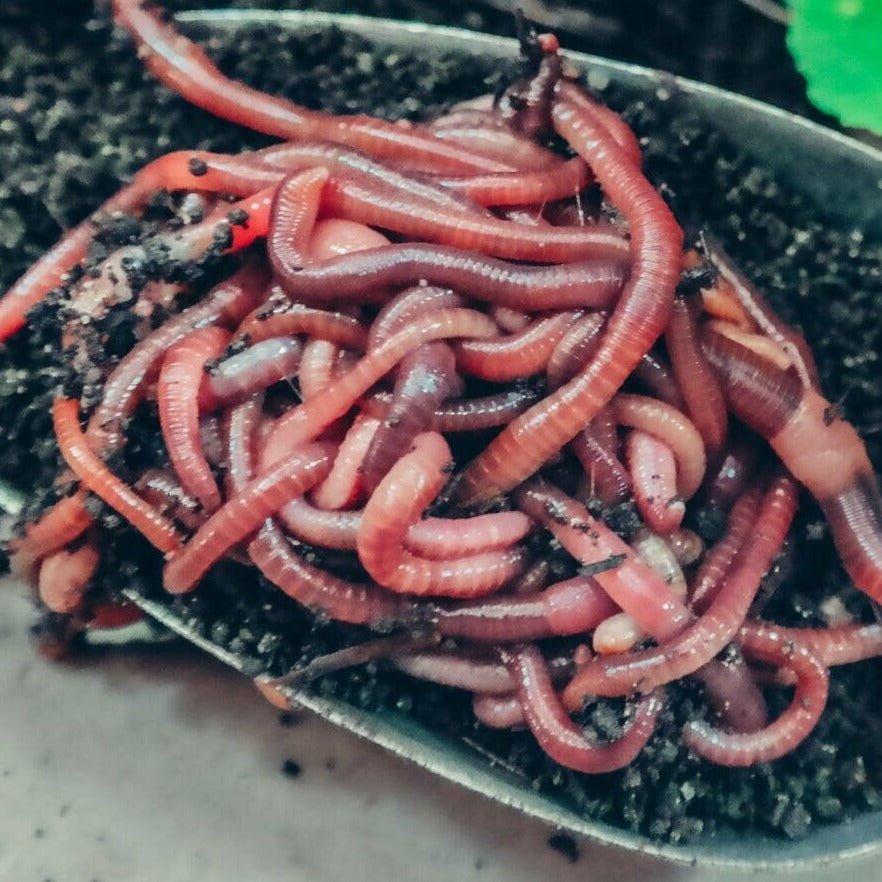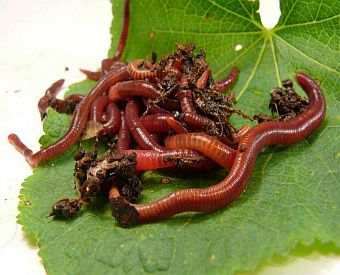Organic Composting with Red Wiggler Worms - Boost Your Garden's Development
Organic Composting with Red Wiggler Worms - Boost Your Garden's Development
Blog Article
Making The Most Of the Advantages of Red Wiggler Worms: A Comprehensive Guidebook for Home Gardeners and Urban Farmers
In the realm of sustainable gardening methods, red wiggler worms stand as unrecognized heroes, quietly transforming organic waste right into nutrient-rich spreadings that can function marvels for dirt health. By exploring the complexities of exactly how to successfully care for and optimize the advantages of red wiggler worms, people can unlock a riches of opportunities for improving the sustainability and productivity of their horticulture undertakings.
Recognizing Red Wiggler Worms
Red Wiggler worms, renowned for their effective composting capacities, are a species of earthworms commonly made use of in vermiculture practices. These worms, clinically referred to as Eisenia fetida, thrive in rotting natural product, making them perfect prospects for composting (Red Wiggler Worms). Red Wigglers are ravenous eaters, with the ability of eating their own weight in natural waste daily. Their digestive process breaks down raw material into nutrient-rich spreadings, which are a useful resource for enhancing dirt and advertising plant growth.
One secret attribute of Red Wiggler worms is their reproductive price. These hermaphroditic creatures possess both male and women reproductive organs, enabling them to reproduce quickly under positive problems. A mature Red Wiggler can produce numerous offspring in a short period, ensuring a stable populace within a composting system.

Establishing Up a Worm Container
When developing a worm bin for vermiculture purposes, proper preparation and focus to detail are necessary for developing a favorable atmosphere for Red Wiggler worms. Begin by selecting an ideal container for your worm bin.

Area the worm bin in an awesome, dark area away from direct sunshine and severe temperatures. By adhering to these actions, you can set up a growing worm container that will effectively process natural waste into nutrient-rich vermicompost for your yard.
Feeding and Preserving Worms
Guaranteeing a nourishing and balanced diet is important for the health and wellness and performance of Red Wiggler worms in a vermiculture system. It is vital to stay clear of feeding them citrus fruits, onions, garlic, milk items, meat, and oily foods as these can be unsafe to the worms or create undesirable smells in the bin.
Appropriate dampness degrees are additionally essential for the health of Red Wiggler worms. The bedding should seem like a damp sponge, offering sufficient wetness for the worms to take a breath via their skin. Routinely inspect the wetness levels and adjust by adding water or dry bedding material as needed. Additionally, preserving appropriate temperature level problems in between 55-77 ° F(13-25 ° C )will certainly ensure optimal worm activity and reproduction. By carefully monitoring their diet regimen, dampness, and ecological problems, home gardeners and urban farmers can sustain a efficient and healthy Red Wiggler worm population check out here for composting objectives.
Gathering Worm Castings
To efficiently remove nutrient-rich worm spreadings from the vermicompost, a systematic harvesting process is crucial for making best use of the composting advantages. The first action in harvesting worm castings is to encourage the worms to move to one side of the bin.
After the castings have actually been collected, it is vital to separate any continuing to be worms from the castings to stay clear of harming them throughout storage or application. One efficient approach is to create conical piles of castings under bright light. Worms will naturally relocate far from the light, permitting easy separation and elimination.
Last but not least, the collected worm castings should be stored in a great, dark, and completely dry place to preserve their high quality and efficiency as a nutrient-rich dirt modification. By adhering to these steps, home gardeners and urban farmers can maximize the benefits of red wiggler worms in their vermicomposting systems.
Utilizing Worm Castings in Gardening
The consolidation of nutrient-rich worm spreadings right into yard soil can substantially boost plant development and total dirt wellness. Worm spreadings, likewise referred to as vermicast, are a natural fertilizer created by red wiggler worms as they break down raw material. These castings are abundant in important nutrients like nitrogen, phosphorus, potassium, and useful microorganisms that advertise plant development and enhance soil structure.
When utilizing worm castings in gardening, it is necessary to blend them completely right into the dirt or click here for more info utilize them as a leading clothing around plants. The slow-release nature of worm spreadings makes certain a steady supply of nutrients to plants in time, decreasing the risk of nutrient leaching and promoting long-term soil fertility. Furthermore, worm spreadings help improve soil aeration, water retention, and microbial activity, creating a healthy atmosphere for plant roots to prosper.

Final Thought
Finally, the utilization of red wiggler worms in home horticulture and metropolitan farming can considerably profit dirt health and plant growth. By recognizing how to set up and preserve a worm container, feed the worms properly, and gather their nutrient-rich spreadings, garden enthusiasts can optimize the benefits of these earthworms. Incorporating worm castings into horticulture techniques can enhance soil fertility and overall plant efficiency. On the whole, red wiggler worms offer a reliable and lasting service for enhancing yard and farm yields.
In the world of lasting gardening practices, red wiggler worms stand as unrecognized heroes, quietly changing natural waste right into nutrient-rich castings that can work marvels for soil health and wellness.When developing a worm container for vermiculture purposes, proper prep work and focus to information are necessary for producing a favorable environment for Red Wiggler worms. The first action in gathering worm castings is to encourage the worms to move to one side of the container. Worm castings, also recognized as vermicast, are an all-natural fertilizer produced by red wiggler worms as they damage down natural matter. By understanding just how to establish up and preserve a worm bin, feed the worms correctly, find out here now and harvest their nutrient-rich castings, garden enthusiasts can make best use of the benefits of these earthworms.
Report this page